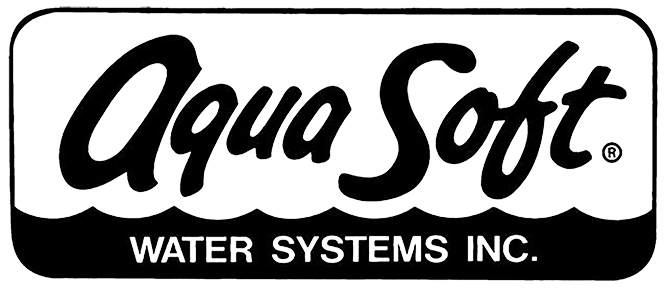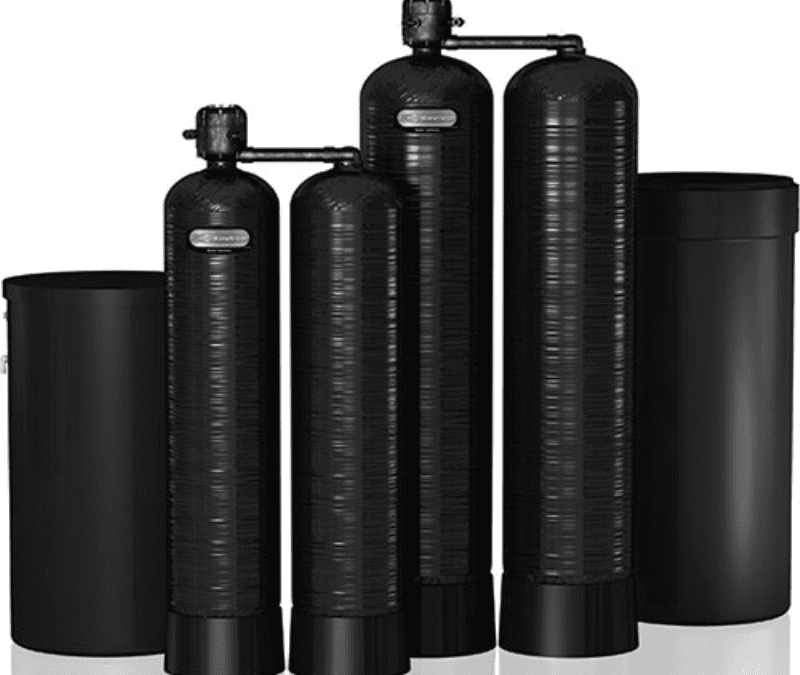Last Updated on March 14, 2025 by Aqua Soft Water Systems
A water softener is a whole-house water treatment system designed to eliminate the minerals that cause water hardness, primarily calcium and magnesium. These minerals can wreak havoc on your home’s plumbing, appliances, and even your skin and hair. Hard water causes buildup on faucets, pipes, and appliances, shortens the lifespan of water heaters, and can even make laundry look dingy and feel harsh.
A water softener works through a process called ion exchange. The system uses resin beads that are charged with sodium ions. As hard water passes through the mineral tank, these resin beads attract the calcium and magnesium ions, which have a positive charge. The negative charge of the beads pulls the positive charge of the minerals, removing them from the water. In return, sodium ions are released into the water. This exchange results in softened water, free from the minerals that cause scaling and buildup.
How Water Softener Regeneration Works
Water softener systems need periodic maintenance to keep functioning effectively, and this is where regeneration comes in. Over time, the resin beads become saturated with the hardness minerals they’ve removed from the water. When this happens, the softener needs to regenerate to flush out the accumulated minerals and recharge the resin beads.
Regeneration is a process where the system uses a concentrated salt solution (brine) to cleanse the resin beads. The brine forces the calcium and magnesium ions to be released from the beads and replaced with sodium ions, recharging them so they can continue softening water. The regeneration cycle typically occurs automatically, either on a timer or based on water usage.
There are two primary methods of regeneration: co-current (downflow) and counter-current (upflow). In co-current regeneration, the brine flows in the same direction as the water, while in counter-current regeneration, the brine flows in the opposite direction, resulting in a more efficient regeneration process.
What Do Water Softeners Remove?
Water softeners are designed to tackle one of the most common water quality issues: hard water. Hard water contains high levels of dissolved minerals, mainly calcium and magnesium, which can cause a variety of problems in the home. Water softeners use a process called ion exchange to remove these hardness-causing minerals, replacing them with sodium or potassium ions.
The primary minerals that water softeners remove are:
- Calcium: This mineral is one of the main contributors to water hardness. Over time, calcium can build up inside pipes, appliances, and water heaters, leading to clogs and damage. It can also leave deposits on faucets, showerheads, and dishes.
- Magnesium: Like calcium, magnesium is another key contributor to hard water. Magnesium can form scale in pipes and appliances, making them less efficient and shortening their lifespan.
By removing calcium and magnesium, water softeners help prevent these issues, improving the lifespan and efficiency of plumbing systems, appliances, and water heaters. Additionally, soft water reduces the need for excessive detergent use in laundry and dishwashing, as it allows soaps and detergents to lather and perform more effectively.
While water softeners primarily target calcium and magnesium, they don’t remove other contaminants such as chlorine, lead, or sediments. For these, a separate water filtration system, like an activated carbon filter or reverse osmosis system, may be needed.
The Components Of A Water Softener
A water softener system consists of three components that work together to remove minerals from hard water, monitor water flow, and periodically clean the system through a regeneration process.
A Mineral Tank
The mineral tank, which is sometimes called a resin tank, is the component where the actual water softening takes place. When hard water is fed into the tank through a water supply line, it seeps through a bed of resin beads that are covered with sodium (respective potassium) ions. The beads extract the calcium and magnesium ions from the water, so the water that flows through your pipes and into your household appliances is soft.
Control Valve
The control valve is a crucial component of the water-softening system used to measure the amount of water passing through a mineral tank. Control valves are demand-initiated controllers that work to maintain the efficiency of water-softening units.
The resin beads in the mineral tank have a maximum capacity for the mineral content they are able to hold. This means that, over time, their ability to soften the water effectively depletes. Before the beads become too overburdened with the mineral content, the control valve will automatically initiate a regeneration cycle allowing the beads to continue removing calcium and magnesium ions..
The maximum capacity is pre-programmed into the valve’s onboard computer and is typically based on the level of hardness in your water, the size of your home, and the number of people living in your house. A meter that is housed in the valve is used to track the volume of water that enters the tank.
Brine Tank
The brine tank is a smaller tank that usually sits adjacent to the mineral tank and is responsible for assisting with the regeneration process. Dissolving salt pellets or blocks are added into the brine tank to assist in the restoration of the resin beads’ positive charge.
Whenever the control valve detects that the resin beads’ capacity has decreased, the brine solution, which consists of a highly concentrated solution of salt (or potassium in some cases), is released into the mineral tank and flushed through the resin.
Different Types of Water Softeners
There are several types of water softeners available, each with its own unique features to address different needs:
- Ion-Exchange Softeners: This is the most common type, using resin beads to remove hardness minerals. It’s effective for homes with moderately hard to very hard water.
- Salt-Free Water Softeners: Instead of removing calcium and magnesium ions, these systems use a process called Template Assisted Crystallization (TAC) to neutralize the effects of hardness minerals. They don’t require salt, but they are more of a conditioning system than a true softener.
- Dual-Tank Water Softeners: For homes with high water usage, dual-tank systems offer continuous soft water. One tank regenerates while the other is in use, ensuring that the system never runs out of softened water.
- Magnetic and Electronic Softeners: These systems use magnetic or electronic fields to alter the structure of calcium and magnesium ions, preventing them from forming scale. While these are less effective than traditional ion-exchange systems, they are sometimes marketed as eco-friendly alternatives.
Other Types of Water Filtration and Conditioning
While water softeners are great for tackling hardness, they don’t address all water quality issues. Types of water filtration systems focus on different contaminants such as chlorine, sediments, and organic compounds.
- Activated Carbon Filters: These are widely used to remove chlorine, chloramine, volatile organic compounds (VOCs), and other contaminants that can affect the taste and odor of water.
- Reverse Osmosis Systems: A reverse osmosis system forces water through a semi-permeable membrane that removes a wide range of contaminants, including bacteria, heavy metals, and salts.
- Whole House Filtration Systems: These systems filter all the water entering your home, not just at a single faucet, providing clean water throughout. They often include a combination of filtration technologies to remove various contaminants.
- UV Water Purifiers: UV light can be used to disinfect water, killing harmful microorganisms and bacteria. While not effective for removing minerals or chemicals, UV systems are excellent for ensuring safe drinking water.
Do You Need a Water Softener?
If you live in an area with hard water, you might be wondering, “Do I need a water softener?” The answer depends on the severity of the hardness in your water and the problems it causes in your home.
Hard water is common in over 85% of the U.S. and can lead to a variety of issues, from limescale buildup in pipes and appliances to dry, itchy skin and dull hair. If you experience any of the following, you may benefit from installing a water softener:
- Scale buildup on faucets, pipes, and appliances, especially water heaters and dishwashers.
- Frequent plumbing issues, like clogged pipes or the need for repairs due to mineral buildup.
- Dry skin and hair after showering, or soap that won’t lather properly.
- Streaked or cloudy dishes, even after washing.
- Increased detergent use when doing laundry, as hard water can prevent detergents from working effectively.
While the upfront cost of a water softener may seem high, it’s an investment that can save you money in the long run by preventing damage to your appliances, reducing energy costs, and making household chores easier. If you live in an area with hard water, installing a water softener can make a noticeable difference in your quality of life.
The Kinetico Premier Series water softeners are non-electric, always online, regenerate on demand, use less water and salt, have iron removal capabilities, and have no computers or timers to set, adjust, repair, or replace.
Get in touch with Aqua Soft Water Systems Inc. to find out more about our water purification solutions.


